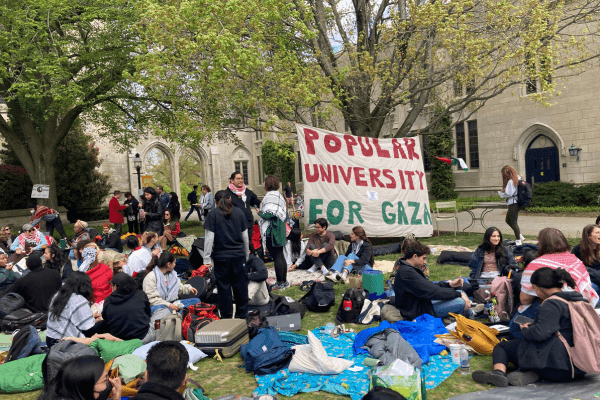History was made on Apr. 27, 2018 when Kim Jong-un crossed over to South Korea. He is the first North Korean leader to do so since 1945 — when the division of the Korea officially happened.
I never imagined seeing such an event in my lifetime. Korea is my motherland, where I was born. My family — aunts, uncles, cousins — live there.
When I was born in the 1960s, the country was trying to recover from Japanese colonialism and the Korean War. These traumatic events devastated the country economically, socially, and spiritually.
Many trace the division of Korea to the Japanese colonization.
When Japan was defeated at the end of WWII, the U.S. controlled the southern part of the peninsula while the Soviets controlled the north. Then, in 1948, two distinct governments were established: One in Pyongyang led by Kim Il-Sung and the other in Seoul led by Syngman Rhee.
Tensions between the two countries finally led to war in 1950. The United States and other U.N. member countries supported the government of South Korea with troops and aid while North Korea was supported by the People’s Republic of China and the Soviet Union. An armistice agreement ended the fighting in 1953 but a peace treaty has not been signed and a state of war continues to exist on the Korean peninsula.
This division divided families, friends, and neighbors. When family members went south during the war, they believed it would be temporary. They anticipated reunification with families they left behind. But this was not the case.
Since the division, there have been three Inter-Korean summits — the first in 2000, the second in 2007, and the third in 2018. All three have discussed the ending of the war and the reunification of people from North and South Korea. But this latest summit seems different. There appears to be change in tone by Kim Jong-un as he also plans to meet with President Donald Trump of the United States in May.
Even though many view this summit with cynicism, it is an important step towards any possibility of peace on the Korean peninsula. The summit was historic because Kim Jong-un and Moon Jae-in met for the first time and agreed to end the war. They also agreed on the Panmunjom declaration which seeks a denuclearization of the peninsula. Russia, China, and Japan have also welcomed the agreement.
On Apr. 27, 2018, Consul General Jong-Kook Lee, Rev. Jesse Jackson, Bishop Sally Dyck, Rev. Martin Lee, and I held a press conference at the Korean Consulate’s office in Chicago. We shared the importance of the Inter-Korean summit and the continuous work of peace that we still need. We are not the only ones calling for peace.
Churches in Korea and Korean immigrants in North America have continuously been praying for peace. The World Council of Churches has also issued a call for prayer for peace on the Korean peninsula. And this inter-Korea summit reveals a pathway to peace. As Trump prepares to meet with Kim Jong-un in May, we will continue to pray that peace can be achieved in the Korean peninsula.
Koreans live in hope. Korean Christians continue to live in hope that God will bring peace. We hope that the wall of war, tension, and distrust that has separated families, friends, and neighbors will come down. We hope that the war can end, peace can be restored, and justice can be established. We hope that this beautiful peninsula, my homeland, can one day be reunited. Let us all continue to pray for peace in the Korean peninsula.
Got something to say about what you're reading? We value your feedback!







